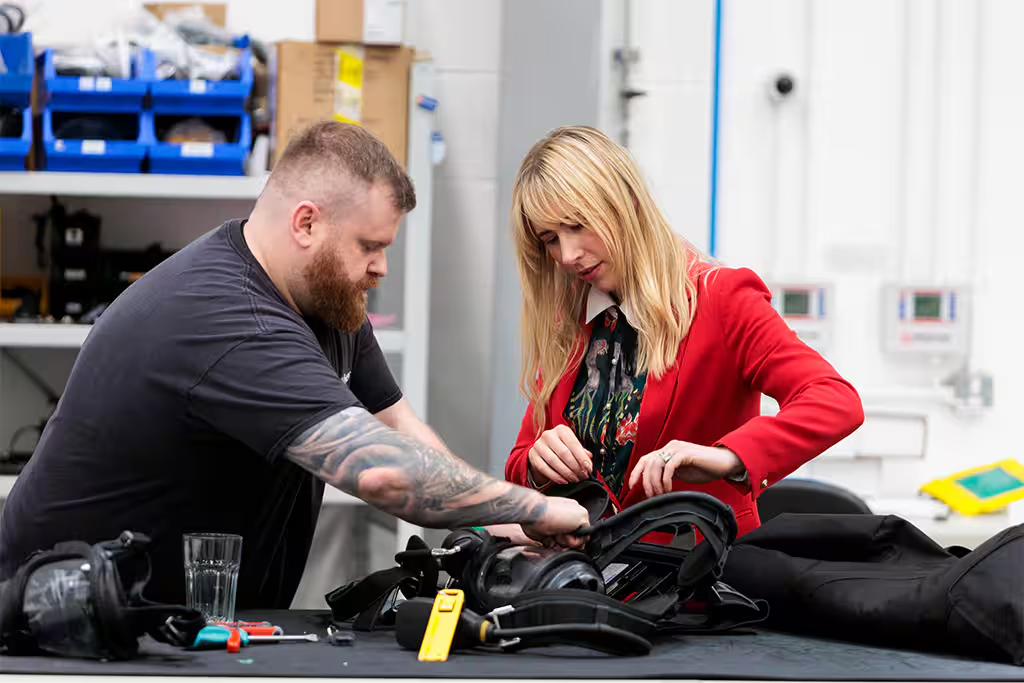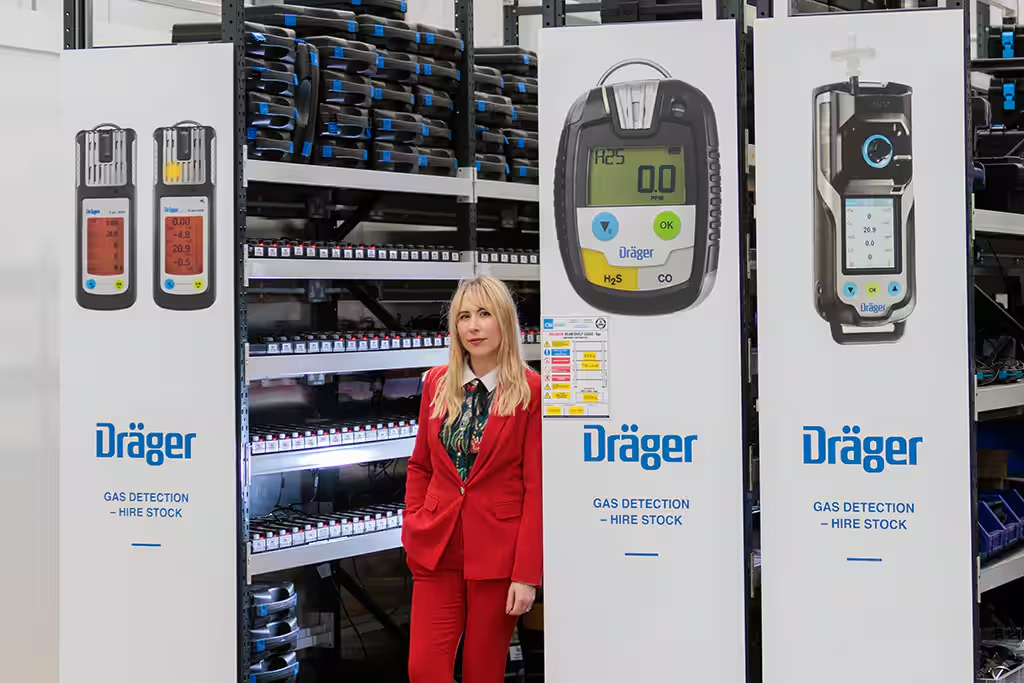Laying a foundation for the future
Hydrogen - a key role in the energy transition
Hydrogen is set to play a key role in the energy transition – and the infrastructure needed to make this happen is already being built. As Business Development Manager Clean Energy for Dräger in the United Kingdom, Megan Hine is helping shape the transition to green energy sources.
When Megan Hine studies maps of the North Sea from her office in the Scottish port city of Aberdeen, she sees one thing above all – plenty of opportunities to drive the energy transition forward. As Business Development Manager Clean Energy at Dräger Safety UK, the 36-year-old native Brit is responsible for helping companies in the oil and gas industry, energy producers and start-ups to replace fossil fuels like natural gas and oil with renewable energy sources such as wind power and green hydrogen. She also helps design their processes in accordance with the latest safety standards, and with the use of Dräger gas measurement technology.
Hydrogen - an extremely volatile and flammable gas
There are at least ten offshore plants in the North Sea and on the European side of the Atlantic alone which hope to convert wind energy into hydrogen as a storage medium. "Clean energy is not necessarily a completely new industry, instead it’s about the transformation of existing industries and the emergence of new lines of business to support that development," Megan explains. "In many cases, hydrogen is the answer to a current problem. For instance, it allows steel mills to meet their enormous heating needs while storing green energy on a large scale." The dangers involved in capturing and storing carbon dioxide, a greenhouse gas, is well known, but now hydrogen provides new risks. "Hydrogen will play a major role as an energy carrier," says Megan, "but many companies are not yet familiar with the details of monitoring this extremely volatile and flammable gas."

Hands-on: anyone who wants to sell modern safety technology for the energy transition must be abble to understand and explain it precisely.

Mobile measurement technology: Dräger's innovative products opens Megan Hine many doors.
Installations of Dräger gas measurement technology
Megan tries to close this knowledge gap with regular presentations to customers, which have been very well received. Among these are a number of large engineering houses in the UK working on strategic energy projects in the UK. These include feasibility studies to convert traditional natural gas salt cavern storage to hydrogen and other energy security projects. The recent invasion of Ukraine by Russia has prompted one Operator, and Dräger customer, to recommission geological storage of natural gas, previously decommissioned in 2017, and they have awarded a feasibility study to a customer looking at the conversion to hydrogen storage.
She considers major installations of Dräger gas measurement technology to be important milestones in the energy transition. In January 2021, the world's second-largest installation of wireless gas detection equipment was commissioned at the Sullom Voe terminal in the Shetland Islands. "We installed over 100 GS01s there along with wireless ISA100 infrastructure, plus more GS01s at a local power station." The GS01 is a wireless infrared gas transmitter for the continuous monitoring of hydrocarbons and ISA100 is a protocol to provide reliable and secure wireless operations, developed by the International Society of Automation (ISA). A second major contract enabled Megan and her colleagues to implement the world's first pilot project by Dräger for Pulsar 7000 and Flame 1500 wireless devices in Orkney.
Data centric monitoring of gas concentrations
In future, we will see numerous other energy producers adding hydrogen electrolysis and storage to their wind farms who have not previously had to deal with fire and gas hazards. "This provides us with opportunities to support them in their new ventures," Megan says.
Two Dräger gas detectors play a significant role in her work. One is the GS01, which as Megan puts it, has "revolutionized” the wireless measurement of combustible hydrocarbon gases and vapors. "If I'm building a new rig, I can just run cables everywhere. For rigs that are decades old, that's much more difficult. GS01s can be wirelessly networked in a snap - without laying miles of cable."
She also points to the Dräger X-Node system for data centric monitoring of gas concentrations as a device that is relevant to the energy transition. Measured values can be transmitted over long distances to a database in real time via a so-called LoRa network and to mobile devices via Bluetooth. "The great thing is that we've been developing it with customers in completely new and different ways, and we want to develop it further in the future." Even applications involving the consumption of hydrogen in private households are possible, Megan said. " Dräger produced a new housing with a 3D printer to add an audible alarm. That shows how versatile it can be," Megan enthuses. "Solving problems can be really addictive – and satisfying."
Text: Steffan Heuer Photos: Ross Johnston/NewslineMedia


